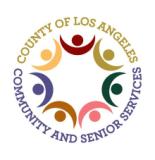What would you like to do today?
Programs and Services
Centers for Independent Living (CILs) are grassroots organizations run by people with disabilities. While the structure of a local CIL may vary across the country, all CILs emphasize consumer control in their governance and service delivery models.
What are Centers for Independent Living (CILs)?
The Rehabilitation Act defines a center for independent living as a: "consumer-controlled, community-based, cross-disability, nonresidential private nonprofit agency that--
(A) is designed and operated within a local community by individuals with disabilities; and
(B) provides an array of independent living services."
What do Centers for Independent Living Do?
Section 725 of the Rehabilitation Act sets out the following standards and assurances with which each local CIL must comply:
- (1) Philosophy
The center shall promote and practice the independent living philosophy of-- (A) consumer control of the center regarding decision-making, service delivery, management, and establishment of the policy and direction of the center; (B) self-help and self-advocacy; (C) development of peer relationships and peer role models; and (D) equal access of individuals with significant disabilities to society and to all services, programs, activities, resources, and facilities, whether public or private and regardless of the funding source. - (2) Provision of services
:The center shall provide services to individuals with a range of significant disabilities. The center shall provide services on a cross-disability basis (for individuals with all different types of significant disabilities, including individuals with significant disabilities who are members of populations that are unserved or underserved by programs under this title). Eligibility for services at any center for independent living shall be determined by the center, and shall not be based on the presence of any one or more specific significant disabilities. - (3) Independent living goals:
The center shall facilitate the development and achievement of independent living goals selected by individuals with significant disabilities who seek such assistance by the center. - (4) Community options:
The center shall work to increase the availability and improve the quality of community options for independent living in order to facilitate the development and achievement of independent living goals by individuals with significant disabilities. - (5) Independent living core services:
The center shall provide independent living core services and, as appropriate, a combination of any other independent living services. - (6) Activities to increase community capacity:
The center shall conduct activities to increase the capacity of communities within the service area of the center to meet the needs of individuals with significant disabilities. - (7) Resource development activities:
The center shall conduct resource development activities to obtain funding from sources other than this chapter.
(c)
Assurances:
[see the complete text of the Rehabilitation Act for the full list of assurances.]
Services provided may include:
- (1) services to help correct blindness, such as-- (A) outreach services;(B) visual screening; (C) surgical or therapeutic treatment to prevent, correct, or modify disabling eye conditions; and (D) hospitalization related to such services;
- (2) the provision of eyeglasses and other visual aids;
- (3) the provision of services and equipment to assist an older individual who is blind to become more mobile and more self-sufficient;
- (4) mobility training, braille instruction, and other services and equipment to help an older individual who is blind adjust to blindness;
- (5) guide services, reader services, and transportation;
- (6) any other appropriate service designed to assist an older individual who is blind in coping with daily living activities, including supportive services and rehabilitation teaching services;
- (7) independent living skills training, information and referral services, peer counseling, and individual advocacy training; and
- (8) other independent living services.
How Do I find my CIL?
As required by the federal Rehabilitation Act, each state must establish a Statewide Independent Living Council (SILC). The California State Independent Living Council prepares California's State Plan for Independent Living. CALSILC also includes a list of California Independent Living Centers.
